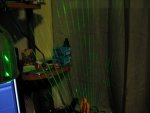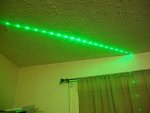Not sure where you are getting this figure from, unless you are looking at a complete unit .. https://illuminationsupply.com/laser...1d91841c9b14cf
OK, thanks for the link. It sounds good. I couldnt find anything in that price range before...and I probably would have bought one for myself if I had found it earlier.
The only ones I have found before were about US$1200 and up just for the controller. Then I still would have to buy an ILDA Laser Scanner and pay import taxes for both controller and Laser Scanner (100% in my country) so that would be too much for me...
Here are the sellers I found before (I am not afiliated with them in any way):
EUR$799 (aprox. US$1100)
Prolight Laser Harp Controller | Laser Show Projector
US$1,155:
Laser Harp controller for ILDA laser show projectors | eBay
GBP$ 1,110 (aprox. US$1,751):
PROLIGHT LASER HARP CONTROLLER ILDA | eBay
Lots of choices and prices here:
Products | KROMALASER





